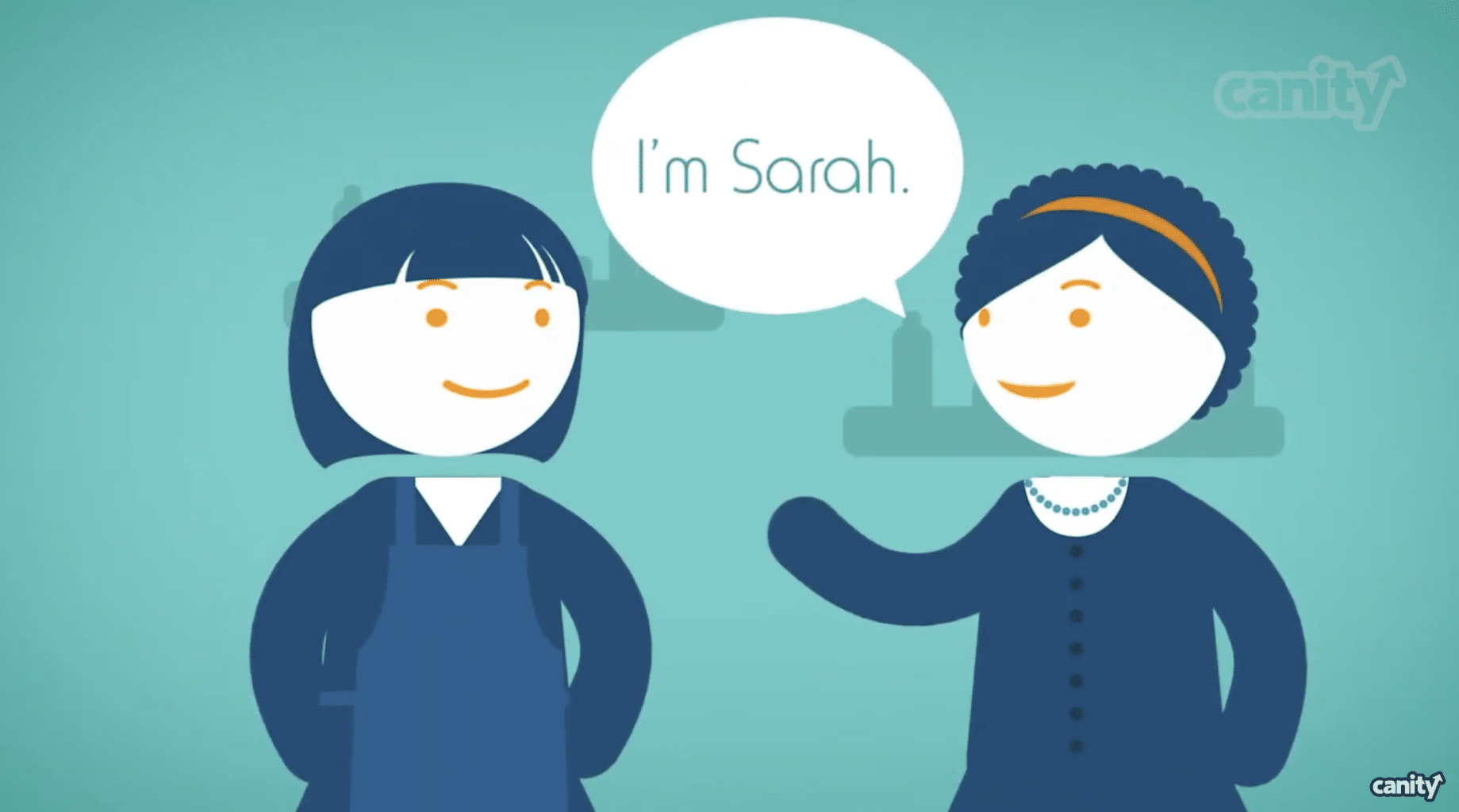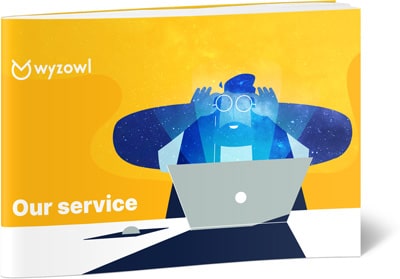Did you know that how you onboard your employees can actually impact your retention rate?
It seems strange to think about the day your employees will move on when you’ve only just hired them, but we all know how important first impressions can be.
That’s a pretty impressive figure! And one way to strengthen your onboarding process is by using video.
Video can be a very effective tool for employee training. Videos are engaging. They’re fun. Memorable. Not to mention, cost-effective.
In this article we’re going to take a look at how you can create brilliant employee training videos that work!
1. Tell a story
In his world-renowned book, Sapiens: A Brief History of Humankind, Yuval Noah Harari does an excellent job of explaining just how important stories are to us as a species. He states:
It makes sense then for stories to be a great device to use if you want your training sessions to be more memorable.
A training video that grips your new employees with an engaging story is bound to linger on in their memory – and have a more lasting impact – than a written handbook detailing roles and responsibilities.
Here’s an example of an employee training video we made for Nikwax:
This video showcases different workplace scenarios that new employees will come across – such as a customer coming into the store for a waterproof jacket or how to effectively sell the aftercare product – and uses the power of animation and a good story to make the message stick.
2. Let your team do the talking
Getting your team involved in your employee training videos is a great way to introduce new staff members to your company culture while also introducing some friendly faces.
Here’s an example from Netflix:
Videos like this can be particularly useful if you have a huge company and new hires won’t get the chance to meet everyone right away.
In addition to having a more personal feel, using your team in your training videos can also save you a lot of money.
You don’t need to hire actors or a film crew, you can simply put a chair in an empty conference room, point a camera at it, sit one of your employees down and you’re ready to rock!
If you’re concerned about employee turnover potentially rendering your employee-focused training videos out of date, you could consider using animation.
Using animated characters to represent your team is a great way to make your videos personal, but not so personal that you need to replace them every time someone leaves.
It can also be fun for your team to see themselves as animated characters! Dropbox did something very similar with puppets. Check it out:
3. Make it relatable
It doesn’t matter how long you’ve been in your current role, we all know what it feels like to start a new job. You’re nervous. Excited. Exhausted from trying to take in every new piece of information.
One way to put new employees at ease is to use a relatable tone of voice in your training videos and represent issues that they can also relate to.
Here’s an example from Reach Out:
This video covers the difficult and sensitive topic of workplace bullying. While being an uncomfortable issue to talk about, it’s also a very important and necessary to discuss this with new employees.
Everyone at your workplace needs to know what will and will not be tolerated. They need to feel safe. And they need to know who to talk to if they’re struggling.
The video above does an amazing job of tackling the topic at hand by covering relatable situations in a conversational tone-of-voice.
4. Don’t be afraid to have fun!
Take a look at this training video we made for cybersecurity experts, BRG:
They used this video at an in-person event as a way to give a fun overview of the training activities they were going to work on throughout the day.
The ancient battle theme adds an element of fun and humour to the topic. Plus, making their employees the heroes and personifying the cyber threats as sneaky goblins and monsters is great way to make the learning material more memorable.
5. Make it bite size
When using videos to train new employees, you could run the risk of making the whole thing a passive experience.
If all you do is hit play and then leave the employee to watch the videos – how do you know they’re actually learning what you need them to?
Shorter, bite sized videos – with time for question and answer sessions in between – can help to combat this issue.
Here’s an example from Canity:

And here is another one, covering a different topic:

These short videos each tackle a different issue in a humorous and easy-to-digest manner.
You’ll be asking new employees to take in a lot of brand new information, so breaking it down like this will leave space for them to ask questions and also digest what they’ve just watched, and potentially make some notes.
6. Ensure uniformity
One of the biggest advantages that training videos have over traditional classroom training sessions is that you can ensure everyone has the same experience.
This benefit was particularly important to pharmaceutical company, AstraZeneca. With almost 70,000 employees, they needed to ensure uniformity across their employee training.

To do this, they used Meta’s Workplace platform to communicate company strategy through live videos.
They have used this same content to train staff from when they started the business, with just 100 employees, to the present day, with almost 70,000.
When you create and roll out employee training videos, you’re not only ensuring uniformity, you’re also creating a resource that employees can rewatch any time they need a refresher.
7. Use AI
AI video tools have improved so much in recent years, and they’re a great way to quickly supplement the rest of your video content.
And there’s no reason why you can’t use AI to make training videos. Tools like Synthesia are inexpensive and good quality (not the same level as a professional video, of course. But definitely not bad for the cost and time investment), so you can use these to churn out tons of training videos.
This can allow you to make mini quizzes with explanations for each answer, like this video:
Final thoughts
And video is one of the best ways to do that. Videos are fun, memorable, and can be used time and time again, to ensure consistency when training new employees.
For more information check out our employee training video production page.







